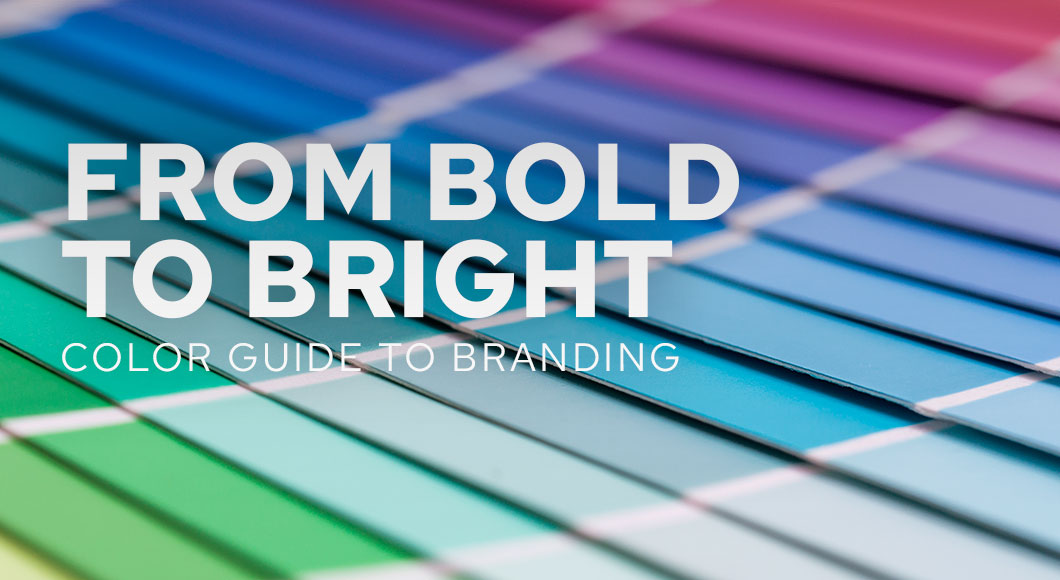
Setting the scene: You’re a small business and you’ve got to pick some colors for a sign, flier, or promotional pen. Unless your small business is graphic design, you may not know the first thing about brand color meanings, or have the time or inclination to dive any deeper than “does this color look good?” when choosing a shade for your logo, website, or customized tote.
Good news! You don’t need to study color theory to make a perfect choice for your logo, or put together a brand color guide to figure out the color theme for your trade show giveaways. We’ve done the legwork (er, color-wheel work) for you.
It’s true, you don’t need to know, but now that the pressure’s off, wouldn’t you like to? If so, here’s brand color theory from 30,000 feet—the SparkNotes version.
Though you may not need to hire a specialist in brand color theory for your logo or promotional merchandise, there are some key takeaways that will ensure you play your best hand when picking colors for your brand.
Colors and color combinations are endless, but there are some basic truths to keep in mind, especially when it comes to colors that represent different things among various cultures. If you could use a brand color guide with just the key facts to keep you out of the color catastrophe trenches, read on:
Tip: For more on colors that help convert customers, see our blog: 3 Colors That Make People Want to Spend Money.
Color can be trademarked! Emotional associations with certain colors are so strong (and profitable) that companies have successfully trademarked them. All kinds of companies have trademark colors that have grown to be associated with their brand.
Tiffany® has robin egg blue, or Pantone 1837®. Christian Louboutin has red soles, while Barbie® has Pantone 219C®, or Barbie Pink. Tools and appliances are in the game as well: Wolf® appliances have trademarked red knobs, and Fiskars® scissors sport telltale orange handles. Target® red? Trademarked. UPS® pullman brown? No bueno.
Use of trademarked colors within the same industry could result in legal trouble, so if you’re unsure, use the Pantone Matching System to identify your color, then go to the US Patent and Trademark Office (USPTO) to ensure it’s not off limits.
Look at a few of these different colored customized products, and see what each color makes you feel about your business:
Full Color 22 oz. Stainless Steel Eli Travel Mug
Bright Alpha Soft Touch Pen with Stylus
Soft Touch Paragon Pen with Color Stylus
Anniversary Bright Hughes Gel Pen
Arlington Stylus Pen with Mirrored Imprint—Blue Ink
Medium White Kraft Eurotote Bag
Full Color Inkjet Black Craft Gift Box
Eclipse Bonded Leather Portfolio with Calculator
As you’re looking at competitors, color wheels, and products to which you might apply your logo, such as signage, stationery, drinkware, totes, and pens, notice your own emotional response to various colors. If you’re an autobody shop with a passion for calm car repair, does blue help communicate your product, service, or approach to business? If your business is a curated baby boutique, perhaps pale yellow is your style.
Enjoy the process of searching the spectrum and honing your hues. Then apply them to your merchandise and let the color work its branding magic!
Sources:
https://www.upcounsel.com/trademark-colors
https://thenextweb.com/news/heres-how-your-company-can-trademark-a-color
https://www.oberlo.com/blog/color-psychology-color-meanings
Whether you’re the band everyone is talking about, or a vendor looking to ride the wave of fame and get…
Wish you could turn your passion into a business? Meet Dash Diaz, owner of the popular Miami-based nursery, Plant Daddy!…
Not getting the visibility you need for your business to grow? Trade shows and conventions are an amazing way to…
In today's competitive landscape, consumers respond to unique offerings that feel homemade, hand selected, and special. If you're seeking a…
There are a lot of fun holidays out there, from World Emoji Day to International Cat Day. But right now,…
Reunite, renew, remember! Planning a family reunion is a fantastic way to reconnect loved ones, celebrate shared history, and forge…